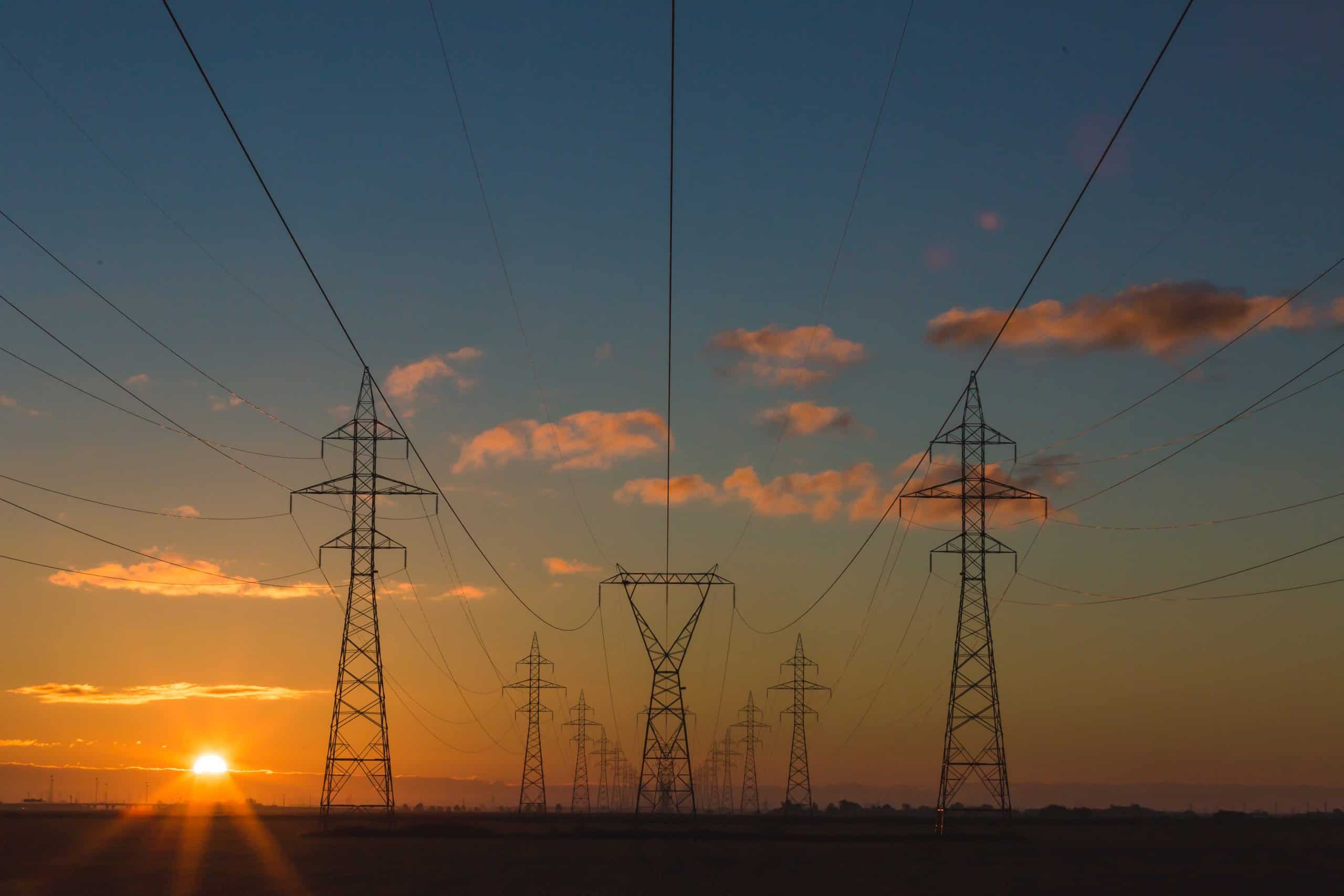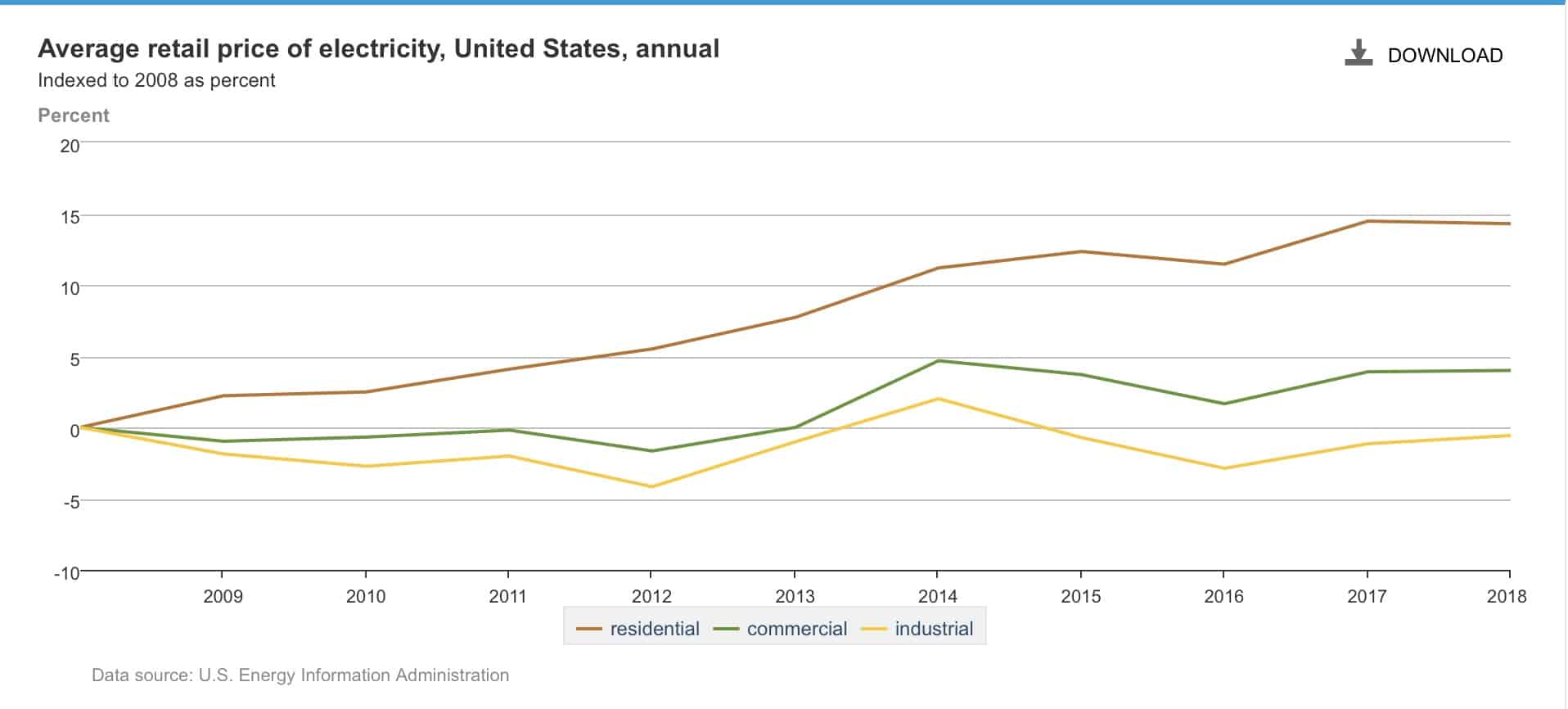Strings Attached: How utilities use charitable giving to influence politics and increase investor profits

Download our entire report (.pdf) here.
Click to jump to the utility case studies.
I. Introduction
In the fall of 2017, a parade of paid actors, pretending to be concerned residents, lined up to offer public comments to the New Orleans City Council in support of a new gas-burning power plant that Entergy wanted to build there.
But the paid actors weren’t the only people testifying on behalf of Entergy or its gas plant proposal. A host of others, including directors of dozens of locally respected non-profits, also testified on behalf of the company and its gas plant proposal.
Howard Rodgers of the New Orleans Council on Aging said that “gas is an energy that we use that does not have any kind of additional effects.” Burning natural gas, a fossil fuel, contributes to climate change, leading to more extreme weather and storm surges that have inundated New Orleans. Last year, Rodgers posed while receiving a $300,000 novelty check from Charles Rice, the Entergy CEO, to administer the utility’s “Power to Care” program.
At least nine of the organizations which testified at the New Orleans City Council’s hearing on the gas plant on Entergy’s behalf that day had received charitable donations from the Entergy Charitable Foundation.
They were a part of the charitable giving operation that Entergy, like virtually all regulated electric and gas utilities, uses to buy support for its proposals from civic groups and charitable operations.
In a first-of-its-kind analysis, the Energy and Policy Institute has examined the philanthropic contributions of 10 leading investor-owned electric utilities in the U.S. We found that all of these major utilities use their charitable giving to manipulate politics, policies and regulation in ways designed to increase shareholder profits, often at the expense of low-income communities whose communities are more likely to bear the brunt of climate impacts and suffer higher levels of air pollution.
From 2013 to 2017, EPI estimates that the 10 utilities that we assessed – Ameren, American Electric Power, Arizona Public Service, Dominion Energy, DTE Energy, Duke Energy, Entergy, FirstEnergy, NextEra Energy, and Southern Company – gave approximately $1 billion to charitable organizations.
| Utility | Total Charitable Giving (2013-2017) |
| Ameren | $35,276,349 |
| American Electric Power | $116,102,421 |
| Arizona Public Service | $38,919,576 |
| Dominion Energy | $105,972,472 |
| DTE Energy | $78,420,180 |
| Duke Energy | $306,482,338 |
| Entergy | $69,514,279 |
| FirstEnergy | $28,312,221 |
| NextEra Energy | $44,020,196 |
| Southern Company | $209,214,246.45 |
| Total | $1,032,234,278 |
That number, for just 10 companies, is 13 times greater than the $78 million that the entire utility sector – including political action committees and individual employees – contributed to federal elections in the 2014, 2016, and 2018 cycle, according to the Center for Responsive Politics’ database.
| Utility sector federal campaign contributions | Amount |
| 2017-2018 | $24,725,200 |
| 2015-2016 | $31,215,236 |
| 2013-2014 | $21,963,304 |
| Total | $77,903,740 |
EPI documented dozens of cases where the charitable organizations who received contributions from the utility companies took political action on the companies’ behalf, just as the recipients of Entergy’s donations testified with the company’s regulators on behalf of its gas plant. The recipients of the gifts often failed to disclose their financial dependence on the utilities when taking those political actions.
In addition to the direct ties between utilities’ charitable giving and political actions taken by grantees, the utilities’ giving helps the companies’ general public relations efforts. Utilities’ communications teams routinely send out press releases boasting of their latest grants.
Clearly, not all of that utilities’ charitable spending is directly political. Utilities’ charitable arms often collect some of their revenue from utility employees, the vast majority of whom are likely acting in good faith to support community-based organizations.
The data and case studies in this report prove, however, that much of the utilities’ charitable activity is geared explicitly to influence politics. While we have not found a rigorous study of the effect of utility charitable giving on political outcomes, some existing academic literature of corporate charitable giving aligns with our findings, showing that corporations use charitable giving to extract political action from their grantees.
One academic study cross-referenced the charitable giving of Fortune 500 companies against public comments submitted to federal agencies on proposed regulations. The study found that:
- “shortly after a firm donates to a non-profit, the grantee is more likely to comment on rules for which the firm has also provided a comment”;
- “When a firm comments on a rule, the comments by non-profits that recently received grants from the firm’s foundation are systematically closer in content similarity to the firm’s own comments than to those submitted by other non-profits commenting on that rule.”
- “When a firm comments on a new rule, the discussion of the final rule is more similar to the firm’s comments when the firm’s recent grantees also comment on that rule.”
In other words, recipients of corporate philanthropy are more likely to help the companies that give them money try to get favorable regulation, and it usually has an impact. The University of Chicago’s Marianne Bertrand authored the study along with Matilde Bombardini, Raymond Fisman, Bradley Hackinen and Francesco Trebbi.
In another study, Bertrand, Bombardini, Fisman and Trebbi examined the relationship between Fortune 500 companies’ charitable giving and influential members of Congress. They found that the companies’ charitable foundations granted more money to organizations located in a congressional district if the district’s representative is seated on committees that are most important to the companies.
“Our analysis suggests that firms deploy their charitable foundations as a form of tax-exempt influence seeking,” the study authors wrote. “Based on a straightforward model of political influence, our estimates imply that 7.1 percent of total U.S. corporate charitable giving is politically motivated, an amount that is economically significant: it is 280 percent larger than annual PAC contributions and about 40 percent of total federal lobbying expenditures.”
It’s impossible to know, using EPI’s analysis, how that study’s findings translate to the utility sector. But if even if a small portion of the $1 billion that only these 10 utilities gave to charity was politically motivated – a proposition which seems likely based on the case studies documented here – then utilities’ influence-seeking via charity would be at least as large, if not much larger than, their other forms of political spending such as traditional campaign contributions.
One of the obvious “tells” that much of the utilities’ charitable spending is driven not by altruism or even general public relations, but by political influence seeking, is how often the utilities’ current or former executives and lobbyists are intimately involved in decisions about how to disburse the charitable funds. Directors of regulatory or external affairs often hold executive or board positions on the utilities’ separate 501(c)(3) charitable organizations. Katharine Bond, the Executive Director of the Dominion Energy Charitable Foundation, is also Senior Policy Director for Dominion Energy and a registered lobbyist for the company. Kim Despeaux, the President of the Entergy Foundation, previously served as the Senior Vice President for Federal Policy, Regulatory & Governmental Affairs for Entergy.
Applicants for grants from the American Electric Power Foundation are instructed to contact representatives of their local AEP operating companies, most of whom work for the utility on external affairs.
EPI also found many cases where utilities’ executives and lobbyists hold board positions on a host of civil society organizations, many of which end up supporting the utilities’ position on political matters.
II. Scope of this report
EPI assessed charitable giving by 10 of the top electric utilities in the country to give a sample of how utilities use philanthropy to manipulate politics. The practice is not limited to these 10 companies, nor to electric utilities in general. Other electric utilities not studied in this report have been documented engaging in politically motivated charitable giving. Regulated gas utilities also employ similar methods. As reported in the Los Angeles Times, SoCalGas donated $36.5 million from 2015 to 2018 to “charities, business groups and other organizations, including some with close ties to cities that have passed” pro-gas, anti-electrification resolutions. Future EPI research may assess how other electric or gas utilities not covered in this report employ charitable giving to influence politics.
This is the first report to compile examples of utilities’ use of their charities to influence politics, and much of the information contained here has not yet been reported publicly. EPI also drew upon published accounts, usually the work of local reporters, whose work we cited or linked.
III. Key Findings: Four ways utilities use charitable giving to influence politics
EPI found four broad avenues through which utilities used their charitable giving to influence politics.
1. Grantees weigh in on political matters in support of utilities
In the most direct method of influence seeking, the utilities gave money to grantees who then offered support, usually via testimony or public comment, to the utilities’ position on regulatory or legislative matters.
When Arizona Public Service (APS) was pursuing a controversial rate increase in 2016, it submitted a letter to its regulators at the Arizona Corporation Commission, signed by civil society organizations and chambers of commerce, in support of the utility. The letter stated: “We, the undersigned, respectfully request that the Arizona Corporation Commission thoughtfully consider the proposals for change made by the utilities you regulate.” 15 of the organizations whose representatives signed the letter had received contributions from APS. From 2013-2018, APS contributions to those organizations totaled $1,685,842.
In 2014, Representatives of the United Way of Central Ohio (UWCO) and the YWCA Columbus lauded American Electric Power (AEP) as an “excellent corporate citizen” and a “community leader” during a public hearing before regulators about AEP Ohio’s Electric Security Plan. AEP was seeking approval for proposals that included consumer bailouts for coal-fired power plants. At the time, Nicholas Akins, the CEO of AEP, was involved in leading fundraising campaigns for both organizations.
2. Utilities give to organizations connected with or favored by important policymakers
EPI also documented a number of cases where utilities have offered philanthropic support to organizations affiliated with policymakers, occasionally even when the policymakers draw separate salaries from the organizations in question.
Sen. Robert Meza, an Arizona legislator, was one of the few Democrats who opposed a renewable energy portfolio standard ballot initiative in 2018. An EPI investigation showed that Meza had received thousands of dollars in personal income for jobs he’d done for multiple organizations that receive charitable funding from APS. Meza told EPI that the relationships created “no conflict of interest.”
In 2018, Virginia Delegate Lamont Bagby (D-Henrico), a legislator with no history of sponsoring energy legislation, co-sponsored a controversial Dominion-backed rate bill while holding a second job as the Director of Operations for a charity which received hundreds of thousands of dollars in donations from Dominion’s foundation and its CEO Tom Farrell. Bagby (D-Henrico) is Director of Operations for the Peter Paul Development Center, which runs programs for disadvantaged children and community members on the east side of Richmond. Bagby also chairs the Virginia Legislative Black Caucus. In 2016, Farrell made a $100,000 gift to the center, with Dominion’s foundation also donating $25,000, as reported by the Richmond-Times Dispatch.
An analysis by the State Corporation Commission concluded that the bill Bagby co-patroned “allows the utilities to keep future excess earnings (i.e. customer overpayments) and, rather than return them to customers, use them for capital projects chosen by the utility.” The legislature passed the bill into law in 2018.
Another lawmaker, Del. Matthew James (D-Portsmouth), was CEO of the Peninsula Council for Workforce Development, a regular recipient of Dominion giving.
3. Utilities use philanthropy to suppress resistance and dissent
Finally, utilities use philanthropy to suppress the likelihood of civil society organizations who otherwise might have an incentive to weigh in politically against the utilities’ interest. Documenting the absence of resistance to utilities’ political agenda is inherently more difficult than documenting the presence of support, but cases do exist.
In 2016, Rev. E. Theopolis Caviness, the pastor of The Greater Abyssinia Baptist Church in Cleveland, was the lead signer of a letter the Cleveland Clergy Council sent to Governor John Kasich supporting FirstEnergy’s Electric Security Plan. The Ohio Consumers’ Counsel called that plan a “bailout” for FirstEnergy, and estimated that it would cost consumers $3.9 billion over eight years. Environmental groups also opposed the plan, which offered subsidies to coal and nuclear plants.
Caviness acknowledged in that same letter that he and other churches in his coalition previously “had various concerns regarding FirstEnergy’s Electric Security Plan. In fact, several of our members marched in protest at FirstEnergy’s Annual Shareholders Meeting.”
What changed? Caviness said in the letter that the coalition of ministers decided to support the utility’s plan after they were swayed toward the merits of the plan in a meeting with FirstEnergy’s CEO Chuck Jones.
“FirstEnergy’s CEO Chuck Jones graciously invited our leadership to the company’s Akron headquarters and laid out all the specifics of its proposal, including generous support for low income customers, a strong commitment to environmental justice, and protection for thousands of Ohio jobs,” the letter said.
Beyond just the meeting with Jones, there may have been another factor: Caviness’s Greater Abyssinia Baptist Church received $100,000 each year from the FirstEnergy Foundation in 2016 and 2017.
In this case, FirstEnergy’s charitable giving is connected with not only the silencing of a potentially politically damaging opponent, but also the recruitment of a new ally.
The impacts of the quiescence of civil society organizations in relation to utilities’ policy goals may be significant. One indicator may be the allocation of utilities’ rate increases between customer classes. Like utilities themselves, commercial and industrial customers of electricity tend to have sophisticated lobbyists and significant political power with which they represent their interests in front of public utility commissions and other state policymaking bodies. Residential customers do not have similar institutional political power, instead relying on state consumer advocates who are often inadequately resourced to go up against utility lawyers and lobbyists.
Civil society groups, many of which represent residential families’ economic interests as part of their mission, could counterbalance the political power of both the electric utilities and large customer segments in policymaking and rate-setting. But utility charitable giving suppresses the likelihood of civil society organizations’ opposition.
The disparity can be seen in electricity price trends over the past decade. Since 2008, electricity rates for residential customers have gone up by 14.3%, while commercial customers’ rates have gone up by 4.0%, and rates for industrial customers, who tend to have the greatest political power, have decreased by 0.6%.

4. Utilities use charities to extort support from low-income communities and communities of color
One theme across EPI’s analysis is that utilities frequently use charitable giving to gain support from organizations that represent low-income communities and communities of color.
Michigan utility DTE Energy provides multiple examples of the practice.
DTE submitted a rate increase proposal in 2018 that included a proposal to change its compensation program for rooftop solar customers. DTE’s proposal would have not only significantly reduced the rate at which a customer would be compensated for the electricity their solar panels send back to the grid, but also would have added a fee on customers who install rooftop solar.
Michigan Public Service Commissioner Sally Talberg said the thousands of comments urging the PSC to reject DTE’s proposed fee and reduced rate for solar compensation were “unprecedented” during her time at the agency.
In response, the utility mobilized non-profit organizations to create the perception of public support for the anti-rooftop solar proposals, particularly from organizations representing communities of color.
Midwest Energy News reported that a group called Michigan Energy Promise emerged in January 2019 to back DTE Energy’s position on net metering and other issues before the PSC.
On February 26, Bishop W.L. Starghill, Jr, a member of the new group and the Michigan Democratic Black Caucus, authored an opinion piece in Bridge Magazine attacking the solar industry using various utility industry talking points.
The allies listed on Michigan Energy Promise’s website were mostly churches, chambers of commerce, and nonprofits that advocate for communities of color. Many of the groups had either received thousands of dollars from the DTE Energy Foundation over the past five years, list the utility as a corporate sponsor on organization websites, or include a utility employee as a member of the board.
Later in 2019, dozens of people gathered in a community room at the Wayne County Community College downtown campus for over four hours. Nearly everyone in the room was there to voice their displeasure with their electric utility company, DTE Energy, and its recently filed Integrated Resource Plan, which was weighted toward fracked gas and away from renewable energy.
Of the 50 individuals who provided public comments, only nine voiced support for DTE Energy. Almost every DTE supporter was in some way connected to the company, including five speakers who represented charities or churches that collectively had received at least $578,500 from the DTE Energy Foundation since 2013. Most of those charitable organizations represented communities of color.
Particularly in recent years, diverse voices that represent communities of color have fought back against utility manipulation or co-option of this type. In Michigan, Jeremy Orr, the state chairperson of environmental and climate justice for the Michigan State Conference of the NAACP, rejected DTE’s argument that rooftop solar power harmed low-income customers. “Clean energy isn’t just an environmental issue: It’s a civil rights issue,” Orr wrote in an op-ed. “Instead of keeping power in the hands of billion-dollar utilities, we envision a future where everyone can participate in and benefit from the clean energy economy — and the potential is huge.”
Indeed, while utilities have tried to influence some state chapters of the NAACP with donations, the national NAACP has argued aggressively against utility co-option. The NAACP released a report in 2019, “Fossil Fueled Foolery” which denounced attempts by utilities and other fossil fuel companies to “pacify or co-opt community leaders and organizations and misrepresent the interests and opinions of communities.”
“Over the years, the companies will regularly support local groups financially, have officials attend meetings and sometimes gain seniority in the membership of local groups, and even invite representatives of influential groups to serve on their boards of directors. All this relationship building results in a false sense of common cause and affinity. This is the approach most commonly used with NAACP units,” the NAACP wrote. The organization added that “energy companies that use fossil fuels are always harmful to consumers, as their business model is rooted in keeping their customers dependent on them, limiting consumer choice, preserving their monopoly, and maximizing profit at the expense of the sustainability of our environment and the health and well-being of our families and communities.”
Utilities’ efforts to co-opt or manipulate communities of color are particularly egregious given many of the companies’ track record of pushing for regressive rate structures that hurt low-income customers the worst, and of environmental injustice, including the siting of polluting power plants and waste facilities in poor communities and communities of color.
Many of the civil-society and non-profit organizations described in this report as receiving money from utilities do crucial work in fields such as affordable housing, community development, racial justice, civil rights, or healthcare. Community organizations tend to operate on small budgets and are not in a position to antagonize potential large donors. They also often have limited experience with energy issues. If a utility’s charitable arm calls and asks them to sign onto a letter or testify at a hearing about the utility’s positive role in the community, they may not have much of a choice but to say yes.
The utilities manipulating community groups, however, have no such excuses for their actions. These companies spend millions of dollars, earned from captive customers, to prosecute their political arguments, and have the resources to employ fleets of lobbyists and lawyers to represent them at public utility commissions and state legislatures.
IV. Lack of utility transparency
Utilities generally have two ways of routing money to charitable organizations:
- All large utilities have separate charitable foundations, organized under Section 501(c)(3) of the tax code. These foundations themselves generally accept gifts from the utility corporate entities, which are tax deductible. They then pass the money onto grantee organizations. The utility 501(c)(3) organizations disclose their grants annually in reporting to the Internal Revenue Service.
- Utilities also donate money directly from their corporate coffers to grantee organizations. Unlike grants that are passed through utility 501(c)(3) foundations, utilities are not required to report these gifts anywhere, making this giving a black box, invisible to the public.
Arizona Public Service (APS) gave $26 million in charity directly from its corporate coffers from 2013 to 2017, which was more than twice what the APS Foundation gave away during the same time period. Contributions that APS made directly, instead of through the APS Foundation, were not publicly known until the Commissioners subpoenaed the information this year. That means those financial connections were hidden when those groups intervened on APS’ behalf, such as by supporting its rate increases before the Commission, opposing an increase in Arizona’s renewable energy standard, and helping APS public relations efforts.
V. Recommendations for regulators and policymakers
Some regulators, even those who are not directly affiliated with charitable organizations that receive contributions from utilities, seem to think of a utilities’ charitable giving not only as a positive factor, but a necessary one.
Tennessee Public Utility Commissioner Ken Hill told fellow regulators at the 2019 Southeast Association of Regulatory Utility Commissioners conference: “And the utility, which shall remain nameless, had done a good job, PR wise. They’d given some money to the local charities and worked in the food bank, they had helped a pastor who had an inner city garden, that the homeless got their food from. They helped in that. In fact that pastor showed up for the hearing, and I was in charge of the hearing, because normally these hearings were raucous. This was pretty quiet, you know, because they’ve done their job.”
Hill’s comments neglect the fact that most of the money that utilities give to charity came from profits that they originally extracted from captive customers. Those customers might prefer simply to keep their money, or to give it to charities of their own choosing, rather than paying it in their utility bills as part of a political influence-seeking effort.
Regulators and policymakers have a responsibility to ensure that all organizations attempting to influence utility ratemaking or policy disclose whether they have a financial relationship to the utility. To aid that effort, policymakers and regulators can:
- Require all entities making written or oral comments in a proceeding that would impact a utility to disclose whether they are receiving money from the utility, have been in conversations about future funding, or have a utility staff member or board member on the organization’s board of directors.
- Require utilities to disclose all charitable contributions that they make from their corporate coffers in an itemized fashion. Mandatory disclosure can be a key tool for regulators and the public to know when organizations attempting to influence decisions are being paid by utilities with an interest in a proceeding’s outcome. The New Hampshire Public Utilities Commission requires utilities to disclose their charitable contributions during rate cases, providing one possible model, though annual filings would allow for more consistent oversight.
- Voluntarily disclose any involvement, of any kind, with charitable organizations by themselves or family members. If a utility is financially supporting a charitable organization with whom the regulator or policymaker, or a family member, is affiliated, then the regulator or policymaker should recuse herself from matters involving that utility.
VI. Data Sources
EPI used three main data sources to analyze utilities’ charitable giving:
- IRS Form 990s of utility charitable foundations, which disclose itemized grants annually.
- FERC Form 1 and FERC Form 60 filings by electric utility subsidiaries, which include data on corporate charitable giving. Utilities vary widely in terms of how inclusive they are in reporting charitable giving on FERC Form 1s, and whether they break out philanthropic giving from other expense categories like sponsorships and advertising.
- Utilities’ corporate sustainability reporting. Many utilities discuss charitable giving in their corporate reporting. The data they provide does not always align with what they provide in FERC Form 1 reporting.
For each utility, EPI included data from multiple sources as a way to show discrepancies between different reporting methods. When calculating sums for each utility’s overall giving, we only added giving totals from different sources if we could be sure they were mutually exclusive, to avoid double counting.
To determine when utilities’ giving appeared to be correlated with political action by grantees, EPI used regulatory and legislative testimony, public comments by grantee organizations, and media reports.
Case Studies
Read the case studies of how each utility has used charitable giving to manipulate politics, policies and regulation in ways designed to increase shareholder profits.



